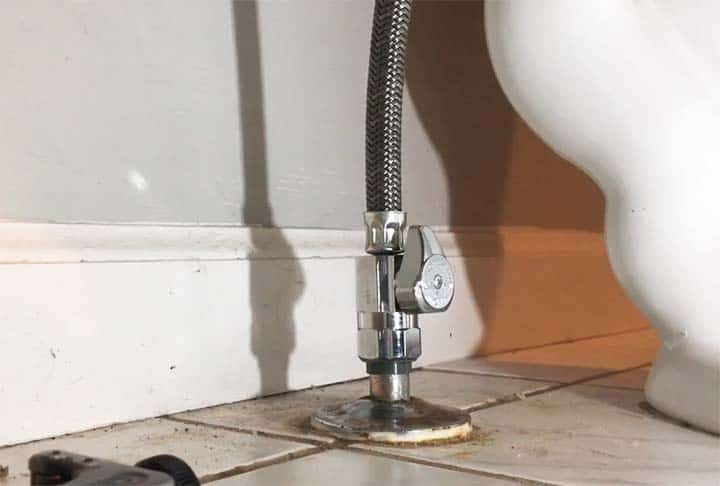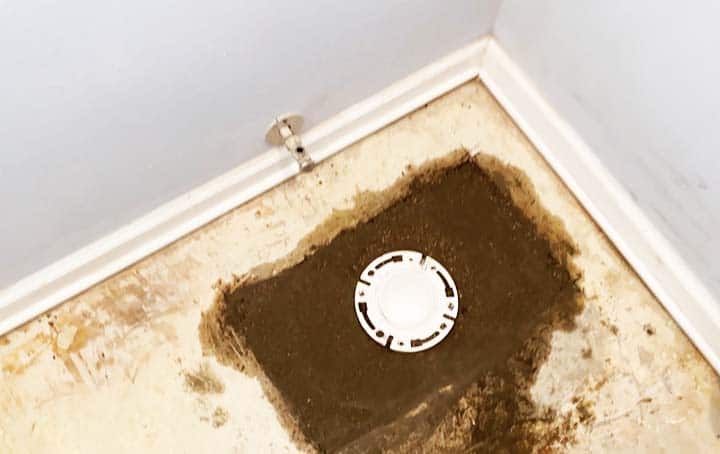Whether you set up a new bathroom or remodel it, one thing is of prime importance, and it’s the gap between the toilet and the wall in the bathroom. The plumber will purposely leave a definite gap between the wall and the toilet. It ensures flexibility to move and install new plumbing requirements if need be. But, how much gap should you leave? Also, you can’t leave the gap untreated. You should fix it to stop moisture build-up.
Henceforth, we will discuss tips on how to fix the gap between the toilet and wall to keep it in good condition without any moisture and water damage. Plus, you will get to know the actual gap you should leave between the bathroom wall and the adjacent toilet.
How Far Should a Toilet Be From the Wall
Let’s discuss the first consideration while installing a new toilet in your bathroom. How much gap should you leave between the bathroom wall and toilet?
As a thumb rule, the toilet’s centerline should be at a 15-inch distance from the adjacent wall. You must remember that this measurement is done from the center point of the toilet and not its outer edge at the back. However, the plumber may slightly increase or decrease this gap depending on the actual plumbing requirements.
For instance, when the plumber sets a new toilet in a newly constructed bathroom, he usually works with a complete wall frame. But, it will still need drywall afterward. Since drywall, in general, is ½-inch thick, the plumber will install the toilet in a new bathroom around a 15.5-inch distance from the finished wall without any drywall construction.
For a back wall, the standard gap of the toilet from the back wall should be around 12-inch. When you measure the distance of the back wall from the center of the toilet flange, it should be 12.5-inch. You should never measure the distance from the wall’s outer edge to get accurate measurements while setting up the toilet.
Next up, you also need to consider the gap between the toilet and the front wall to place the toilet bowl properly. Ideally, the toilet should be at least 21-inch away from the fixture or front-facing wall. But, at times, you may be restricted with space in small bathrooms. You can also leave a 16-inch gap between the toilet and the front-facing wall if it happens. This measurement also should be done from the centerline of the toilet flange and not its outer edge.
In this regard, we recommend you choose a round toilet bowl instead of an elongated toilet to save space.
Last but not least, for wall-mounted toilets, the gap between the toilet flange and wall should be around 12-inch and not more than that. Or else, the toilet may have an improper placement, and it might move to create discomfort while you sit on it.
Tips on How to Fix the Gap between Toilet and Wall
When you set up a new toilet or remodel the bathroom, the gap between the wall and the adjacent toilet is a major concern. In one place, there should be a minimum gap between the bathroom wall and toilet to allow flexible movement and further plumbing installations. On the other hand, if the distance between the toilet and the adjoining wall is too much, it leaves space for moisture to dampen the wall sooner than you expect.
You can fix it with two quick solutions when you find more than the required space between the toilet and the wall. It includes:
- Relocating the waste pipe
- Using offset flange
We will discuss these solutions in the following sections.
Relocating the Waste Pipe:
Although relocating the toilet’s waste pipe is an expensive option, it is the only option to fix the gap between the toilet and the wall. Also, it allows you to place the toilet perfectly without damage and inconvenience.
- First off, you should remove the toilet bowl from its flange. The toilet flange is attached to the subfloor using multiple screws. Thus, you may use an adjustable wrench to remove the screws attached to the toilet flange to remove it safely.
- Next up, you must also remove the concrete slab and subfloor around the toilet flange. You should remove the slab and the subfloor safely and adequately so that you have enough space to install the toilet after relocating the waste pipe successfully.
- Now, follow user instructions to redesign the plumbing pipes. When you reroute the waste pipe, you can conveniently fix the gap between the bathroom wall and the toilet.
- Now, fill the newly created and existing holes due to the waste pipe rerouting with concrete.
- Now, install the toilet flange and the toilet once you have filled up the subflooring. Also, finish off the project by fixing the bathroom flooring.
Use Offset Flange
Another way of dealing with them too far is the gap between the toilet and the wall is offset flange. The offset toilet flange is a tiny yet effective piece of hardware to safely and successfully connect the toilet base with the adjacent plumbing at the bottom of the toilet bowl.
The difference between the offset flange and the standard flange is construction. While the offset flange is slightly angled, the standard flange is constructed vertically.
- Firstly, remove the existing toilet bowl from the bathroom floor. Also, eliminate the older wax ring and block the waste line to prevent sewer gasses explosion in the bathroom. It will stop the gasses from entering your home and allow you to work conveniently. You can use an older rag to block the waste pipe hole.
- Now, you need to plan the best fitting of the toilet offset flange. It will typically fit with a standard 4-inch pipe or a 3-inch PVC. When you fix the offset flange, ensure that it doesn’t impede the flow of the waste from the toilet to the drain pipe.
- Now, you have to remove the existing toilet flange and subfloor to mount the new offset flange of the toilet. Use a screwdriver to remove the screws and use a Dremel to cut off the existing drain pipe. It allows you to make space for the new pipe installation. Also, use a reciprocating saw to remove the subfloor of the toilet.
- Now, it’s time to install the new toilet flange. You need to use one-step PVC cement on the pipe and the toilet flange. It allows you to fit the waste pipe and the offset flange quickly and easily without any inconveniences. Alternatively, you may use a rubber footing to fix the offset toilet flange. Finally, fill the last gaps and install the wax ring, subfloor, and toilet bowl.
Final Words
The standard gap between the toilet and the adjacent toilet shouldn’t be more than 16″. However, if the gap between the toilet and the wall is too much, you need to fix it to help the toilet and wall remain in good condition.
In this regard, this guideline on how to fix the gap between the toilet and the wall should be useful for you. You can either use an offset toilet flange or reroute the waste drain pipe to fix the gap accurately and quickly.
I am James Martin, An professional plumber with more than 16 years of experience. The main purpose of my writing is to share my experiences of helping others. Be with me and explore bathroom plumbing, installation, cleanness ideas, and many more.




